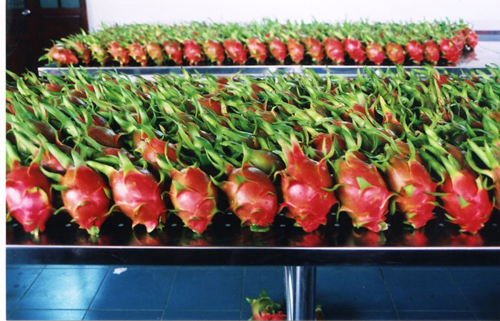Yet, despite its popularity, questions often arise about the shelf life of dragon fruit. How long can this vibrant and flavorful fruit be stored before it begins to lose its freshness and appeal? Let’s delve into the intricacies of dragon fruit preservation to uncover the answers.
Table of Contents

Understanding Dragon Fruit:
Before we delve into the shelf life of this intriguing fruit, it’s essential to understand what sets dragon fruit apart. Also known as pitaya or pitahaya, dragon fruit belongs to the genus Hylocereus and is native to Central America. Its distinctive appearance, characterized by vibrant pink or yellow skin and speckled flesh punctuated by tiny black seeds, makes it a visually striking addition to any fruit bowl or dish.

Factors Influencing Shelf Life:
The ripeness, storage conditions, and variety of a dragon fruit all have an impact on its shelf life. Understanding these factors is crucial for maximizing the fruit’s freshness and flavor.
Ripeness:
Like many fruits, the ripeness of a dragon fruit affects its life. A ripe dragon fruit is characterized by its slightly soft texture and sweet aroma. At this stage, the fruit is at its peak flavor and should ideally be consumed promptly to enjoy its full sensory experience.
Storage Conditions:
Proper storage is paramount in extending the life of a dragon fruit. Dragon fruits should be stored in a cool, dry place away from direct sunlight. Ideally, temperatures should range between 45°F to 50°F (7°C to 10°C) to slow down the ripening process and preserve the fruit’s freshness. Refrigeration is recommended for ripe dragon fruits to further extend their life. However, it’s essential to avoid storing dragon fruits at excessively cold temperatures, as this can lead to chilling injury and affect the fruit’s quality.

Variety:
Dragon fruits come in several varieties, each with its own unique flavor profile and characteristics. The two main types of dragon fruit are the Hylocereus undatus, which features white flesh and pink skin, and the Hylocereus megalanthus, known for its yellow skin and white flesh. While both varieties offer similar nutritional benefits, their shelf life may vary slightly depending on factors such as ripeness and storage conditions.
Shelf Life of Whole Dragon Fruit:
When properly stored, a whole, uncut dragon fruit can last for approximately one to two weeks. However, the exact shelf life of a dragon fruit may vary depending on factors such as its initial ripeness and storage conditions. It’s essential to inspect the fruit regularly for signs of spoilage, such as mold growth or unpleasant odors, and discard any fruits that show indications of deterioration.
Shelf Life of Cut Dragon Fruit:
Once a dragon fruit is cut open, its shelf life decreases significantly due to exposure to air and moisture. Cut dragon fruit should be stored in an airtight container or wrapped tightly in plastic wrap to minimize oxidation and prolong freshness. When stored in the refrigerator, cut dragon fruit can typically last for up to three to four days. However, it’s essential to consume cut dragon fruit promptly to avoid food safety issues and ensure optimal taste and texture.

Tips for Extending Shelf Life:
Maximizing the shelf life of a dragon fruit requires careful handling and storage. Here are some tips to help extend the freshness of this exotic fruit:
- Choose ripe dragon fruits with vibrant skin and a slightly soft texture.
- Store whole dragon fruits in a cool, dry place away from direct sunlight.
- Refrigerate ripe dragon fruits to prolong their shelf life and maintain freshness.
- Avoid storing dragon fruits at excessively cold temperatures to prevent chilling injury.
- Wrap cut dragon fruit tightly in plastic wrap or store it in an airtight container to minimize oxidation.
- Consume cut dragon fruit promptly to ensure optimal taste and texture.
By following these tips, you can enjoy the shelf life of a dragon fruit to its fullest and savor the unique flavors and textures that this exotic fruit has to offer.
Conclusion:
In conclusion, ripeness, storage conditions, and variety are a few factors that affect the shelf life of dragon fruit. By understanding these factors and following proper handling and storage practices, you can extend the freshness of dragon fruit and enjoy its exotic flavors for an extended period. Whether enjoyed whole or cut, dragon fruit offers a delightful sensory experience that is sure to captivate fruit enthusiasts and culinary adventurers alike.
